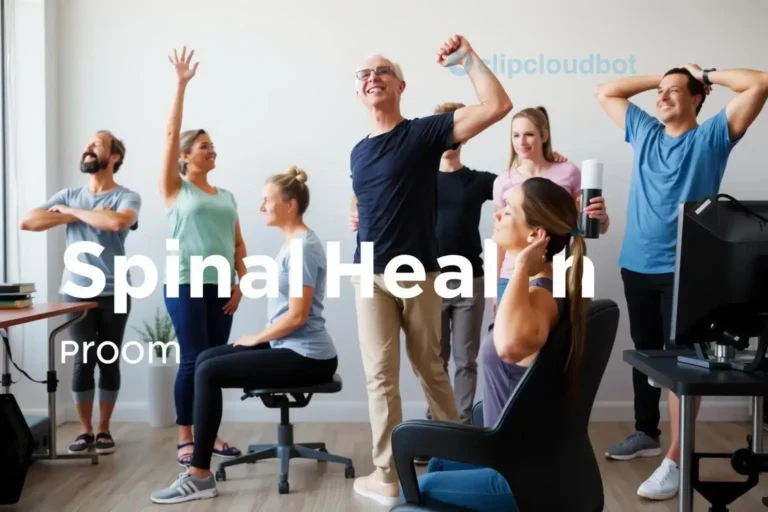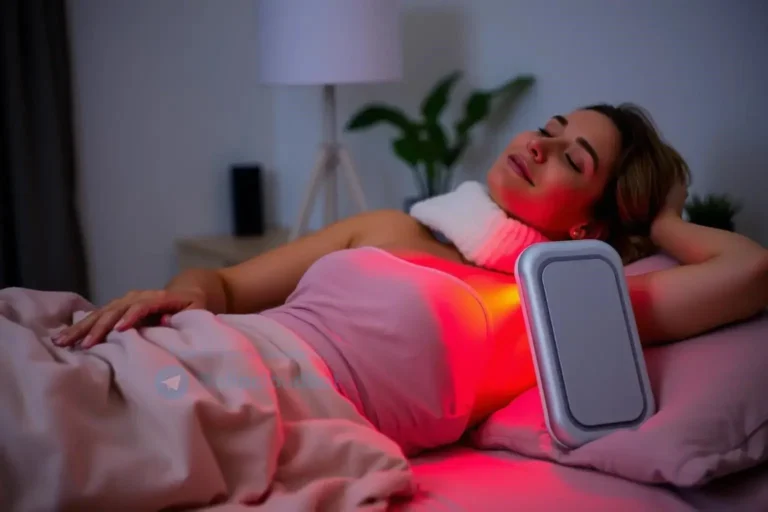Micro-Movements: Combating the Sedentary Lifestyle
Modern life often traps us in chairs, leading to a sedentary lifestyle with detrimental health effects. Micro-movements offer a powerful antidote. These small, frequent movements throughout the day combat the dangers of prolonged sitting. They boost energy levels, improve circulation, and enhance overall well-being, subtly weaving activity into your daily routine. From simple stretches to quick walks, micro-movements are the key to unlocking a healthier, more active you.
The Problem with Sitting Still
Extended periods of inactivity, a hallmark of the modern sedentary lifestyle, pose a significant threat to our health. While seemingly harmless, prolonged sitting triggers a cascade of negative effects that ripple throughout the body. Our bodies are designed for movement, and when we deny them this essential need, we disrupt vital physiological processes. The consequences can be far-reaching, impacting everything from our cardiovascular health to our mental well-being.
One of the most immediate concerns is the decreased circulation that occurs when we sit for too long. Blood flow slows, leading to a buildup of fatty acids in the blood vessels. This increases the risk of heart disease, stroke, and other cardiovascular complications. Moreover, prolonged sitting contributes to muscle weakness and stiffness, particularly in the core and lower back, increasing the likelihood of pain and discomfort. The lack of movement also hinders efficient calorie burning, contributing to weight gain and increasing the risk of obesity-related diseases like type 2 diabetes.
Beyond the physical repercussions, a sedentary lifestyle can also take a toll on our mental health. Studies have linked excessive sitting to increased feelings of anxiety and depression. The lack of physical activity can disrupt the release of endorphins, the “feel-good” hormones that contribute to a positive mood. Furthermore, prolonged sitting can negatively impact cognitive function, affecting focus, concentration, and overall mental clarity.
The dangers of prolonged sitting extend even to our metabolic health. Sitting for extended periods disrupts the body’s ability to regulate blood sugar levels, increasing the risk of insulin resistance and metabolic syndrome. This, in turn, can lead to a range of health problems, including type 2 diabetes and heart disease. The cumulative effect of these negative consequences underscores the importance of breaking free from the sedentary trap and incorporating more movement into our daily lives.
Introducing Micro-Movements: Small Changes, Big Impact
Enter micro-movements: the simple yet powerful solution to combating the detrimental effects of prolonged sitting. These are small, intentional movements performed frequently throughout the day, designed to break up long periods of inactivity. Unlike structured exercise, micro-movements seamlessly integrate into your daily routine, requiring minimal effort and no special equipment. They offer a practical and accessible way to counteract the negative impacts of a sedentary lifestyle and boost overall well-being.
The beauty of micro-movements lies in their versatility and ease of implementation. They can be anything from standing up and stretching every 30 minutes to taking a short walk during your lunch break. Even simple acts like fidgeting, tapping your feet, or shifting your weight can contribute to increased energy expenditure and improved circulation. These seemingly insignificant movements, when performed regularly, accumulate to create a significant positive impact on your health.
By incorporating micro-movements into your daily routine, you can effectively counteract the negative consequences of prolonged sitting. They help improve blood flow, reducing the risk of cardiovascular problems. They combat muscle stiffness and pain, promoting greater flexibility and mobility. Micro-movements also boost energy levels and enhance mental clarity, leading to increased productivity and improved mood. Furthermore, these small movements contribute to increased calorie burning, aiding in weight management and reducing the risk of obesity-related diseases.
Micro-movements represent a paradigm shift in how we approach physical activity. They empower us to take control of our health by integrating movement into every aspect of our day, rather than confining it to dedicated workout sessions. This approach fosters a more sustainable and holistic approach to well-being, making physical activity an integral part of our lives rather than a separate chore. By embracing micro-movements, we can transform our sedentary routines into opportunities for movement and reap the numerous benefits for our physical and mental health.
Easy Micro-Movements for the Workplace
The workplace often presents the biggest challenge to staying active, with long hours spent seated at a desk. However, even in this environment, micro-movements can be seamlessly integrated into your workday. These simple yet effective strategies can transform your workspace from a sedentary trap into an opportunity for movement and improved well-being. By incorporating these micro-movements, you can combat the negative effects of prolonged sitting and boost your energy levels throughout the day.
Start by setting reminders to stand up and stretch every 30 minutes. Simple stretches like shoulder rolls, neck rotations, and leg extensions can alleviate muscle stiffness and improve circulation. Take advantage of phone calls or virtual meetings as an opportunity to stand and pace. This not only increases your physical activity but also enhances focus and engagement. Instead of sending emails to colleagues in the same building, walk over and speak to them in person. This fosters social interaction while also increasing your daily step count.
Consider replacing your traditional desk chair with a standing desk or a stability ball. These alternatives encourage more dynamic sitting and engage core muscles, promoting better posture and reducing back pain. If a standing desk isn’t feasible, try using a footrest to elevate your feet and promote better circulation. Take the stairs instead of the elevator whenever possible. This simple swap adds a burst of cardio to your day and strengthens leg muscles.
During your lunch break, resist the urge to remain seated. Instead, take a brisk walk outdoors or find a quiet space to perform some simple stretches. This midday movement break can revitalize your energy levels and improve your focus for the afternoon. By incorporating these easy micro-movements into your workday, you can transform your office environment into a space that supports your physical and mental well-being. These small changes can make a big difference in combating the negative effects of a sedentary workplace.
NEAT Ways to Boost Your Daily Activity
Beyond structured exercise, Non-Exercise Activity Thermogenesis (NEAT) plays a crucial role in boosting your daily energy expenditure and combating the negative effects of a sedentary lifestyle. NEAT encompasses all the physical activity you perform throughout the day that isn’t formal exercise, from walking and fidgeting to cleaning and gardening. By consciously increasing your NEAT, you can significantly improve your overall health and well-being.
One of the simplest ways to increase your NEAT is to incorporate more walking into your daily routine. Opt for walking or cycling instead of driving whenever possible. Take the stairs instead of the elevator or escalator. Even short walks throughout the day can accumulate to a significant amount of physical activity. If you have a sedentary job, consider using a treadmill desk or taking regular walking breaks.
Around the house, embrace opportunities for movement. Engage in activities like gardening, cleaning, or home repairs. These tasks not only contribute to a tidy and well-maintained home but also provide valuable physical activity. Stand up and move around during TV commercials or while on the phone. Even simple acts like pacing or doing chores during phone calls can contribute to increased NEAT.
Fidgeting, often discouraged, can actually be a beneficial form of NEAT. Tapping your feet, shifting in your chair, or playing with a stress ball can subtly increase your energy expenditure. While these movements may seem insignificant individually, they add up over time. Embrace these opportunities for spontaneous movement throughout your day.
By consciously incorporating these NEAT strategies into your daily life, you can significantly increase your overall physical activity and combat the negative effects of a sedentary lifestyle. These small changes, when consistently applied, can make a big difference in your overall health and well-being, boosting your energy levels, improving your mood, and promoting a healthier, more active lifestyle.
Making Micro-Movements a Habit
Integrating micro-movements into your daily routine requires conscious effort and planning, especially in the beginning. However, with persistence and the right strategies, these small movements can become ingrained habits, seamlessly woven into the fabric of your day. The key is to start small, be consistent, and find ways to make movement enjoyable and sustainable.
Begin by setting realistic goals and gradually increasing the frequency and duration of your micro-movements. Start with something achievable, like standing up and stretching every hour. As you become more comfortable, gradually increase the frequency to every 30 minutes. Use visual reminders, such as sticky notes or phone alarms, to prompt you to move throughout the day. These cues can help you stay on track and maintain consistency.
Integrate micro-movements into your existing routines. Pair them with activities you already do regularly, such as brushing your teeth, checking emails, or watching TV. For example, do calf raises while brushing your teeth or stand up and stretch during TV commercials. This linking strategy makes it easier to remember and incorporate movement into your day.
Find activities you genuinely enjoy and make them a part of your micro-movement routine. If you enjoy dancing, put on some music and move around for a few minutes every hour. If you prefer walking, take short walks during your breaks or lunch hour. By incorporating activities you find pleasurable, you’re more likely to stick with your micro-movement plan long-term.
Track your progress and celebrate your successes. Use a fitness tracker or a simple notebook to monitor your daily activity levels. Seeing your progress can be motivating and encourage you to continue. Reward yourself for reaching milestones, whether it’s achieving a certain number of steps or consistently incorporating micro-movements throughout the week. By making micro-movements enjoyable and rewarding, you can transform them from a chore into a sustainable and healthy habit.






